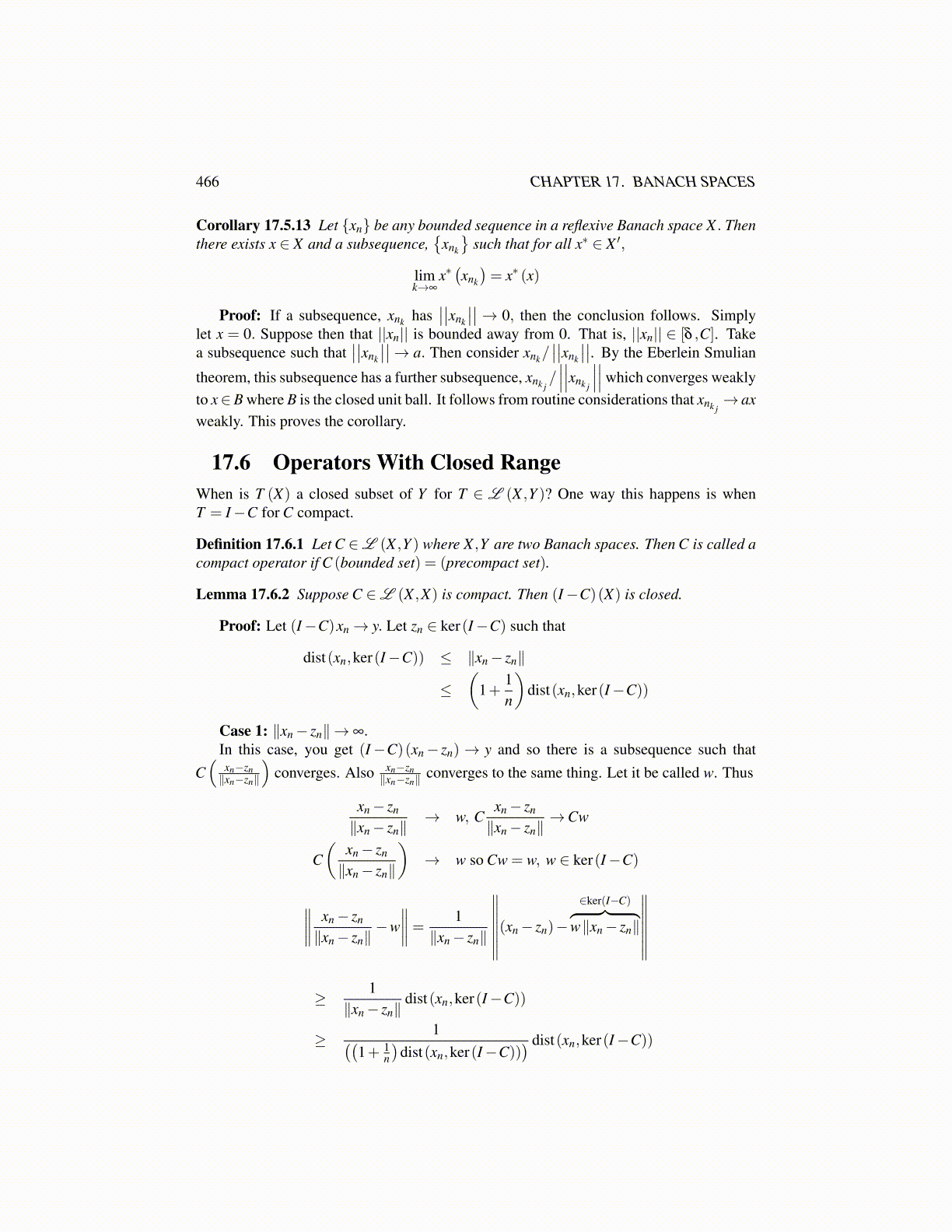
466 CHAPTER 17. BANACH SPACES
Corollary 17.5.13 Let {xn} be any bounded sequence in a reflexive Banach space X . Thenthere exists x ∈ X and a subsequence,
{xnk
}such that for all x∗ ∈ X ′,
limk→∞
x∗(xnk
)= x∗ (x)
Proof: If a subsequence, xnk has∣∣∣∣xnk
∣∣∣∣→ 0, then the conclusion follows. Simplylet x = 0. Suppose then that ||xn|| is bounded away from 0. That is, ||xn|| ∈ [δ ,C]. Takea subsequence such that
∣∣∣∣xnk
∣∣∣∣→ a. Then consider xnk/∣∣∣∣xnk
∣∣∣∣. By the Eberlein Smulian
theorem, this subsequence has a further subsequence, xnk j/∣∣∣∣∣∣xnk j
∣∣∣∣∣∣which converges weaklyto x∈B where B is the closed unit ball. It follows from routine considerations that xnk j
→ axweakly. This proves the corollary.
17.6 Operators With Closed RangeWhen is T (X) a closed subset of Y for T ∈ L (X ,Y )? One way this happens is whenT = I−C for C compact.
Definition 17.6.1 Let C ∈L (X ,Y ) where X ,Y are two Banach spaces. Then C is called acompact operator if C (bounded set) = (precompact set).
Lemma 17.6.2 Suppose C ∈L (X ,X) is compact. Then (I−C)(X) is closed.
Proof: Let (I−C)xn→ y. Let zn ∈ ker(I−C) such that
dist(xn,ker(I−C)) ≤ ∥xn− zn∥
≤(
1+1n
)dist(xn,ker(I−C))
Case 1: ∥xn− zn∥→ ∞.In this case, you get (I−C)(xn− zn) → y and so there is a subsequence such that
C(
xn−zn∥xn−zn∥
)converges. Also xn−zn
∥xn−zn∥ converges to the same thing. Let it be called w. Thus
xn− zn
∥xn− zn∥→ w, C
xn− zn
∥xn− zn∥→Cw
C(
xn− zn
∥xn− zn∥
)→ w so Cw = w, w ∈ ker(I−C)
∥∥∥∥ xn− zn
∥xn− zn∥−w
∥∥∥∥= 1∥xn− zn∥
∥∥∥∥∥∥∥(xn− zn)−
∈ker(I−C)︷ ︸︸ ︷w∥xn− zn∥
∥∥∥∥∥∥∥≥ 1∥xn− zn∥
dist(xn,ker(I−C))
≥ 1((1+ 1
n
)dist(xn,ker(I−C))
) dist(xn,ker(I−C))